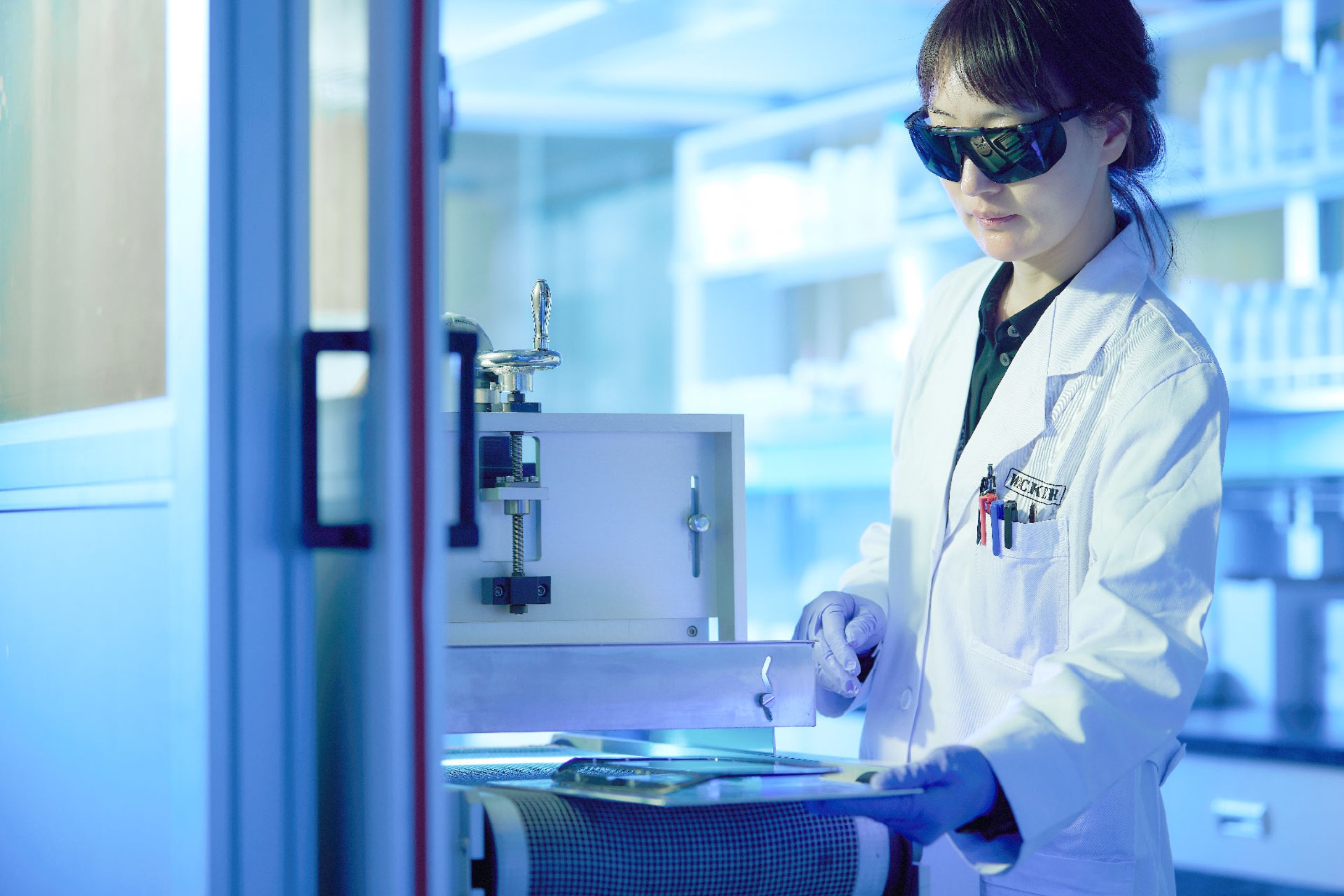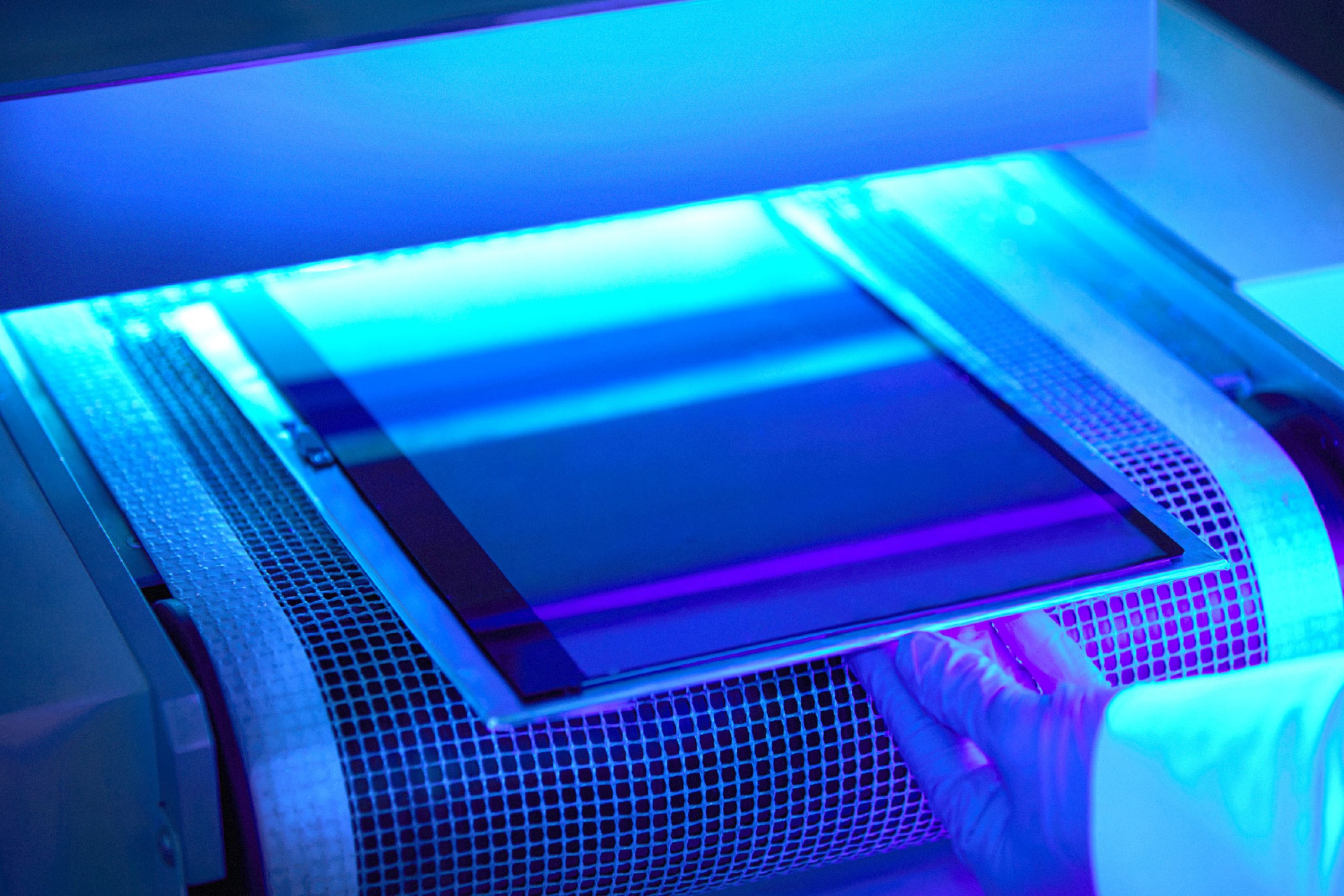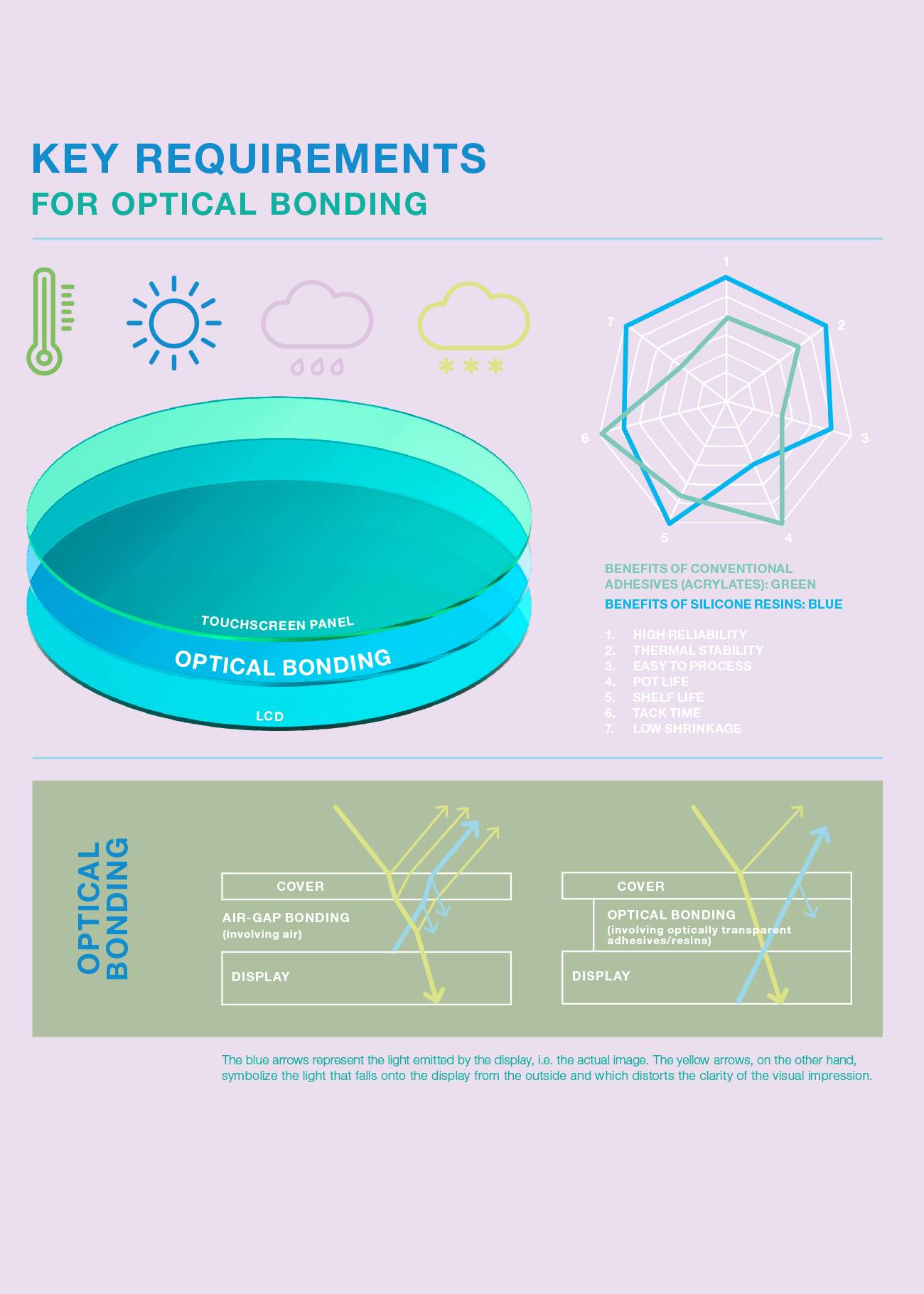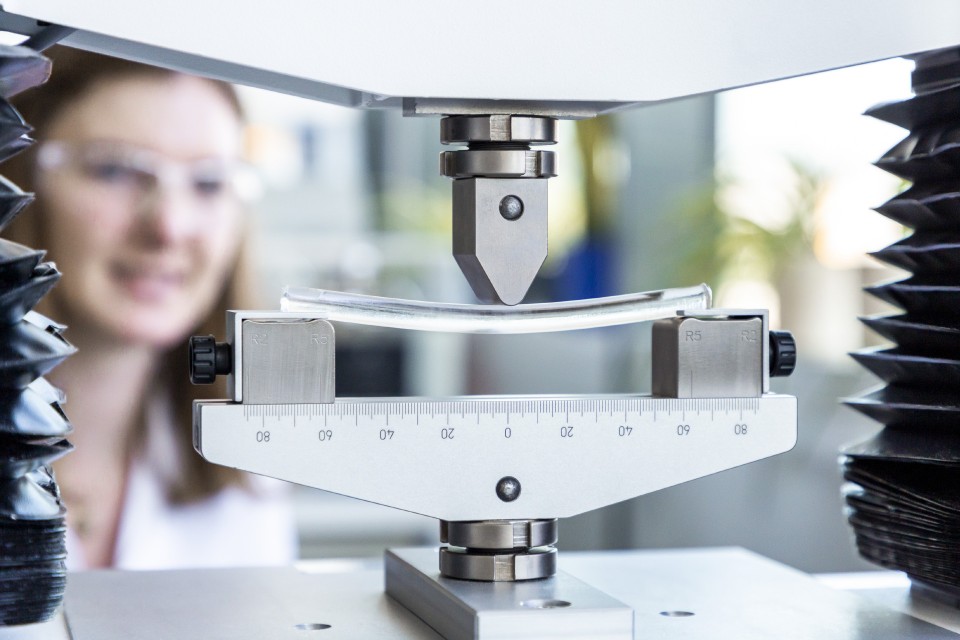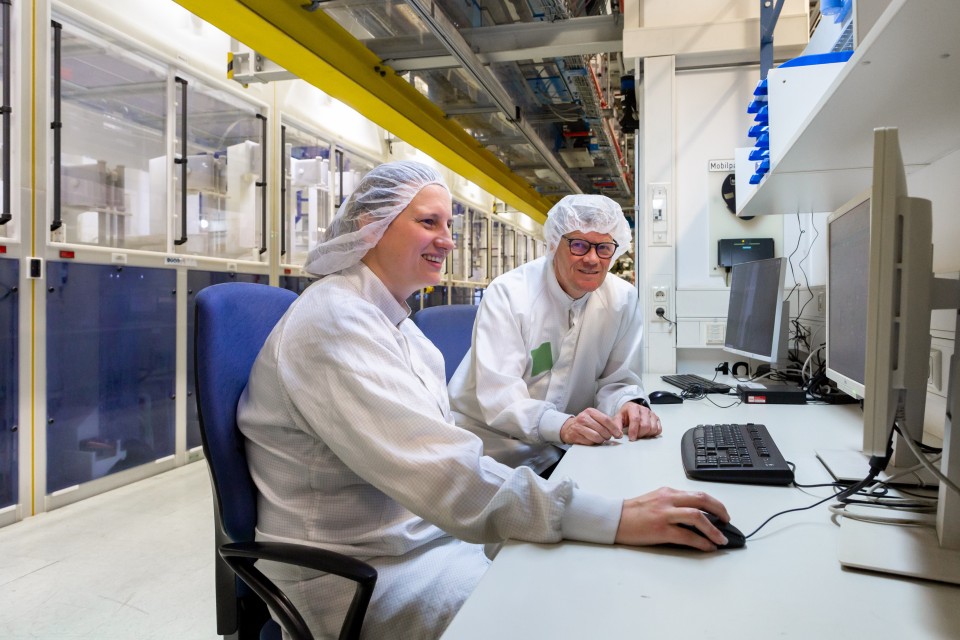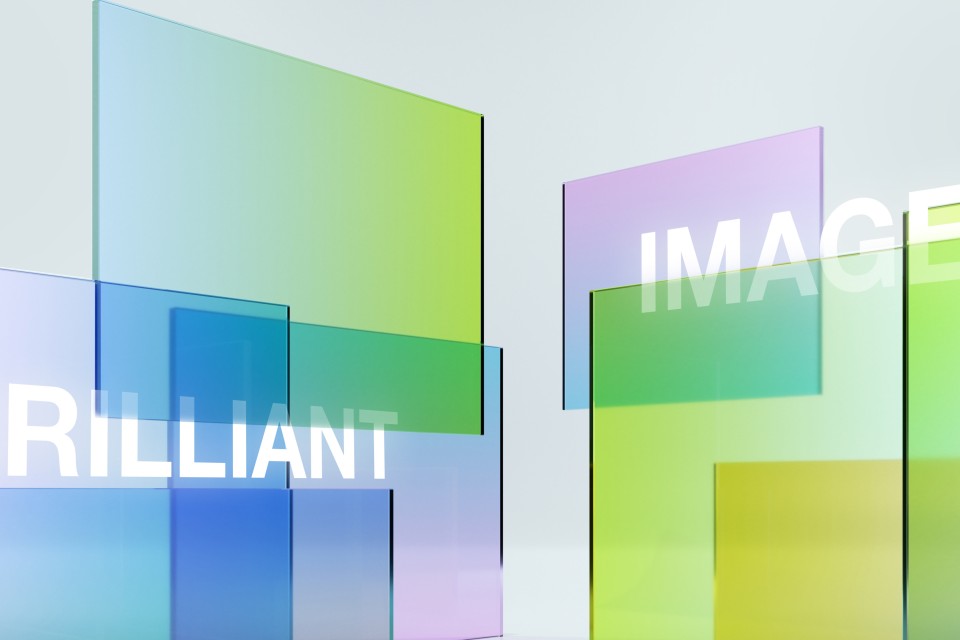
From 110 to over 45,000 Millipascal Seconds
The viscosities exhibited by WACKER’s LUMISIL® UV silicone resins are truly wide-ranging.
Aug 31, 2021 Read time: approx. MinutesMinute
Brilliant Images
Despite being subject to mechanical and thermal stress, monitors and optical displays must be easy to read throughout their entire life cycle. WACKER has developed transparent silicone resins at a dedicated competence center in South Korea. These resins bond the cover glass to the display and ensure good contrast and sharpness.
Displays are now an integral part of our daily lives. An anecdote can bring this point home: a young boy visiting the zoo with his parents pinched his thumb and forefinger against the aquarium glass to try to zoom in on the fish – something he had learned from his smartphone screen. For the new generation, virtual reality is just as real as everything taking place beyond it.
But screens are not only omnipresent as components of smartphones, tablets and TVs. They form the human-machine interfaces, for example in cars and ticket machines, or in the monitoring of industrial facilities.

WACKER Korea’s optical-bonding team inspects a pane of glass bonded with silicone resins: (from left) JungEun Lee, JaeWoo Lim, SeungA Lee.
All displays have a cover glass, which is often touch sensitive (as is the case with touchscreens). Beneath this glass is the display itself, which converts electrical into optical signals. There are basically two ways of bonding the display to the cover glass. It may be glued to the frame around its edges.
As this leaves an air gap between the display and cover glass, the process is called “air-gap bonding.” It has the disadvantage that light is refracted not only at the surface of the cover glass, but at the air gap, too, reducing the contrast and sharpness for the viewer. Alternatively, the display and cover glass are full-surface bonded by means of a transparent material whose refractive index has been appropriately adjusted. The result of this “optical bonding” is a brilliant visual impression.
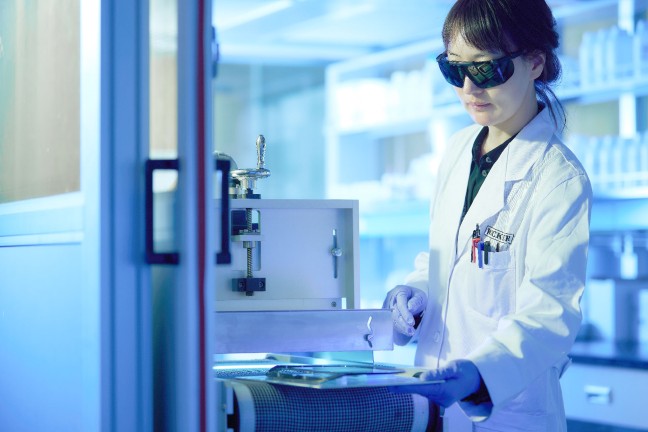
SeungA Lee applies UV light to a pane of glass, which causes the silicone to start curing.
Film Bonding or Liquid Adhesives
The optically clear bond can be achieved by film bonding or with liquid adhesives. Such adhesives are cured by UV light. They are based on acrylates or silicones.
“Both technologies are equally widespread on the market. But silicone resins will become increasingly established for challenging applications, since they do not shrink so much and offer superior thermal stability and reliability,” says JaeWoo Lim, WACKER’s Global Business Development Manager for Optical Bonding in South Korea. He expects the share of silicone-based liquid adhesives on the optical bonding market to more than double by 2026.
The optically clear, two-component liquid adhesive can be applied by five different processes, from conventional nozzle spraying through to screen printing. The particular method used by the manufacturer determines how viscous the adhesive should ideally be. Correspondingly, WACKER has developed different types of optical high-performance silicones with different viscosities in a range from 110 to over 45,000 millipascal seconds. Marketed under the name LUMISIL® UV, they retain their transparency even after years in service.
Typical of the challenging applications involved are auto dashboards. In summer, the temperature in a parked car can easily exceed 50 degrees Celsius. The car will vibrate when running over speed bumps, railroad crossings or at high speeds.
“Silicone resins do not shrink so much and offer superior thermal stability and reliability.”
JaeWoo Lim, Global Business Development Manager, WACKER SILICONES
All-Digital Dashboards
In addition, “Car manufacturers want to use the dashboard and optical displays as an important design element to distinguish themselves from the competition,” explains WACKER’s JaeWoo Lim. “The trend is toward large-area, curved dashboards instead of small, low-profile models. Traffic safety alone dictates they should be easy to read with a good picture quality – even in poor light.” All-digital touchscreen dashboards are now used especially in electric cars, where they indicate to the driver that a completely new drive technology is in use. However, large, curved screens are particularly susceptible to cracking under mechanical stress.
“Together with our customers, we have developed individual solutions that bring out the advantages of silicone resins in optical bonding,” says SeungA Lee, who heads the WACKER Optical Bonding Competence Center (OBCC) in Seoul.
The South Korean chemists and engineers faced some considerable challenges: individual applications have meant that not only the requirements to be met by screens have changed. Manufacturers are, in addition, employing different display and touchscreen technologies, not to mention a variety of materials. SeungA Lee’s team has therefore tweaked the molecular structure of the silicone resins and tailored their properties to customer needs.

Taking a close look at a pane of glass bonded with silicone resin. Silicones marketed under the LUMISIL® UV brand retain their transparency even after years in service.
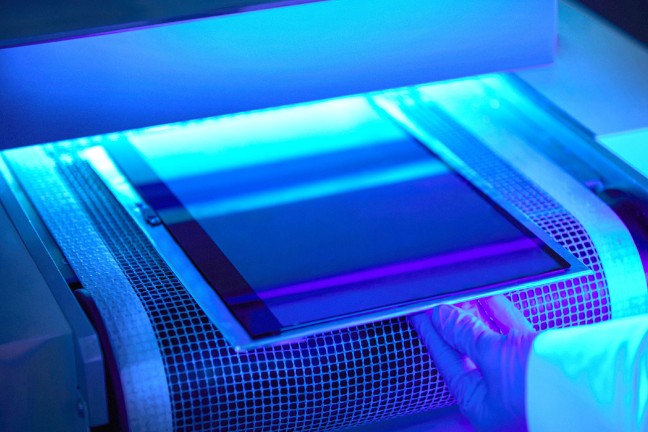
The curing process is initiated by UV light, which makes it possible for manufacturers to work efficiently.
Good Stress Relief Is a Must
One of their aims was to find an optimum compromise between very strong bonding of the components and good stress relief of the assembly under mechanical stress. “We have achieved this by varying the proportion of hydrogen in the crosslinker and chain extender,” explains SeungA Lee.
The silicone resin’s resistance to high humidity, on the other hand, depends on how many silicon atoms in the siloxane backbone are surrounded solely by oxygen atoms. Moisture often fogs conventional transparent silicones.
The process of joining the cover glass to the display with LUMISIL® UV differs from the conventional process used for acrylate-based materials. Just a single activating UV irradiation step is required before assembly of the components. The assembly then cures completely by itself. The manufacturing process is even faster. Acrylates, by contrast, require one or two additional UV irradiation steps after the joining process in order to cure as desired. “At the OBCC, we support customers in optimizing their production processes accordingly,” says SeungA Lee. For example, the curing rate and curing behavior of the silicone resin can be adapted to the customer’s requirements.
JaeWoo Lim is convinced that the auto dashboards’ success story will be repeated in other markets in the future: “Optical silicones can be used to integrate mini-LEDs into high-quality monitors, tablets and TVs. The mini-LEDs backlight the screen at selected places to increase contrast,” he explains.
Another promising field of application is the construction sector: smart windows that change their light transmittance according to the insolation (i.e. exposure to sunlight) and temperature could profit from optical high-performance silicones, as could gigantic advertising displays on buildings. What’s more, transparent, adhesive coatings play a role in solar cells. “We are targeting our activities at promising growth markets,” explains Lim.
“Car manufacturers use the dashboard and optical displays as a design element to distinguish themselves from the competition.”
JaeWoo Lim, Global Business Development Manager, WACKER SILICONES
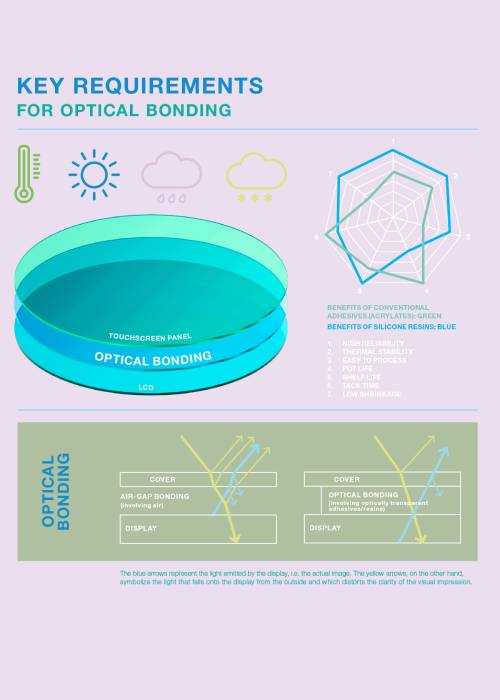
Mr. JaeWoo Lim
Global Business Development Manager
WACKER SILICONES
+82 31 697-2441
jaewoo.lim@wacker.com


